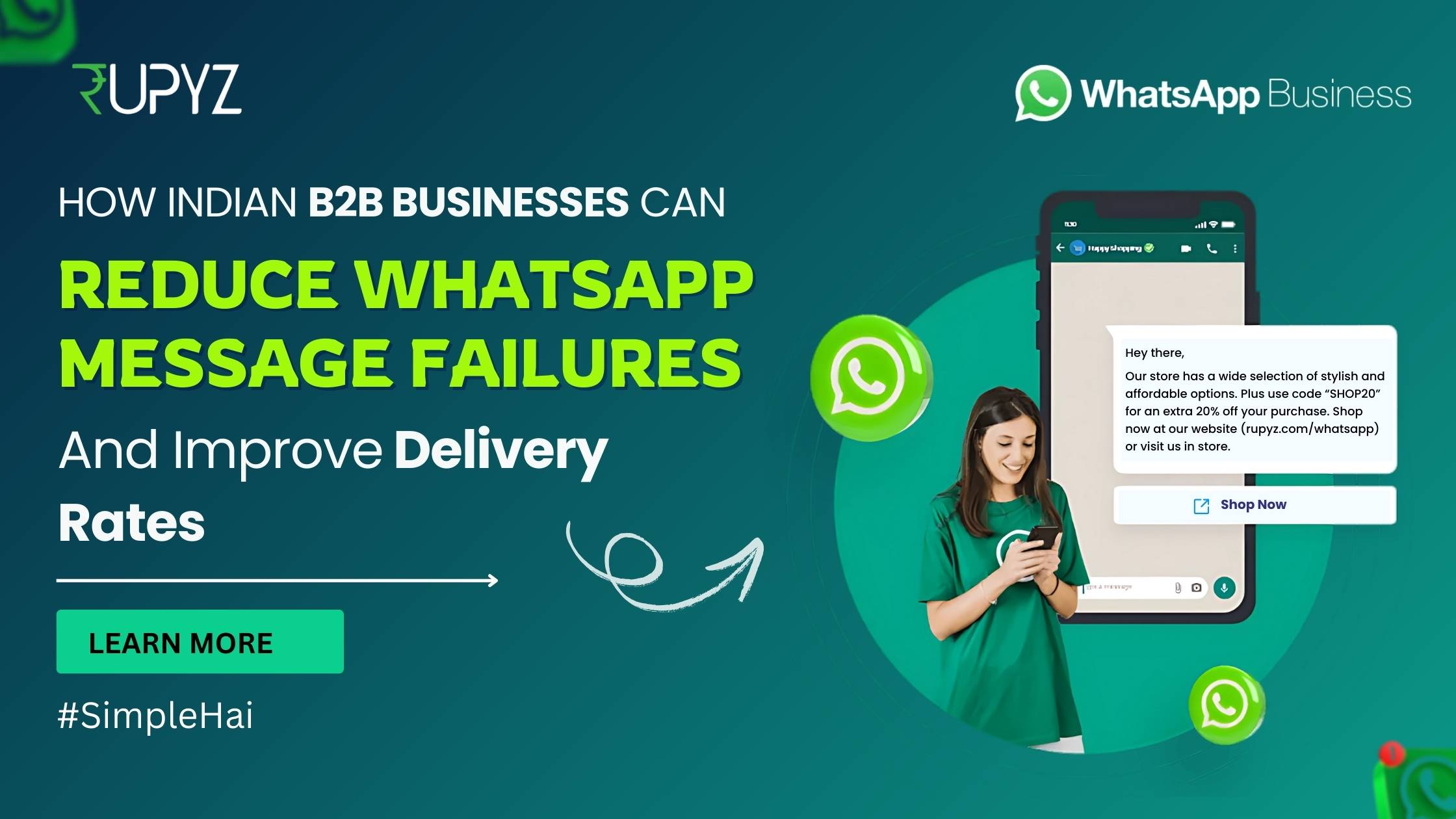
How Indian B2B Businesses Can Reduce WhatsApp Message Failures and Improve Delivery Rates
Key Reasons for Message Failures in Indian Context
1. Meta's Frequency Capping (Main Cause)
If you send 3 promotional messages daily about new products, the third message may fail for 70% of users.
- Send critical utility messages first (like payment reminders or order tracking).
- Reserve marketing templates for your most important campaigns.
What is “Unhealthy System Activity”?
This is an error WhatsApp shows when it detects message overload or policy issues.
It usually happens if:
- You send too many promotional messages in a short time
- You keep sending the same message to everyone
- Your number has low user engagement
How to avoid it:
- Reduce message frequencySegment your contacts
- Focus more on utility messages in the beginning
2. Policy Violations
- Sending loan or insurance offers without the user asking for them
- Using unapproved templates (e.g., writing “50% off” in a “Service Update” message)
- Not giving users an option to stop or opt out
- Sharing catalogs or PDFs without the user’s prior consent
- Always use approved templates
- Include a clear “STOP” or opt-out message
- Send catalogs only to those who have requested
3. Prohibited Content
- Alcohol promotions
- Multi-level marketing (MLM) schemes
- Political or religious campaigns
- Stock trading or investment tips
A wine distributor sends offers to restaurants—100% message failure due to policy.
4. Regional Restrictions
- Using international numbers (like +1 or +44) to send messages in India
- Sending only in English when your audience prefers Hindi or local languages
- Promoting banned services in specific states (e.g., online gambling in Telangana)
Will Sending Utility Messages First Reduce Failure Rates?
Yes, it helps a lot.
When you send a utility message first—such as “Your invoice is ready” or “Your order #1234 shipped”—this opens a 24-hour window where you can also send marketing messages.
Example Strategy:
- Utility message: “Welcome Rajesh Kirana to our family!” (warm welcome)
- Within 24 hours: “Check out our latest offers for Kirana stores.”
Result:
This simple change can reduce failure rates from 40% to under 5%.
Warm-Up Tip: Build Trust First
When starting with a new number or new campaign, don’t send bulk marketing right away.
For the first 1–2 weeks:
- Send only helpful messages (order status, greetings, updates)
- Keep it personal and relevant
This builds a good rating for your number and increases delivery success later.
Best Practices for Indian B2B WhatsApp Messaging - "Do's "
- Use 80% utility messages (orders, invoices, payment follow-ups)
- Send marketing messages between 2 PM to 5 PM when users are active
- Add Hindi or local language versions for better engagement
- Always take user consent before starting a campaign
- Give an option to STOP or unsubscribe
Best Practices for Indian B2B WhatsApp Messaging - "Avoid"
- Sending promotions between 9 PM and 9 AM
- Using the same message for all users—segment by industry or location
- Promoting restricted content like alcohol, politics, stock tips
- Sending frequent offers without sending value-added updates first
Delivery Benchmarks to Track
Want to know if your campaigns are doing well? Check your delivery rate:
- 90%+ = Excellent
- 80-90% = Acceptable
- Below 70% = Needs improvement (check template or time of send)
Conclusion
How Rupyz Helps
Rupyz is a powerful sales enhancement platform tailored for B2B brands. Built on top of the WhatsApp Business API, Rupyz enables brands to directly engage with their retailers and distributors. You can float real-time schemes, discounts, and offers, send order updates, and even collect feedback—right from WhatsApp. It’s not just a marketing tool but a full-fledged retailer service platform.
With Rupyz, brands can:
- Deliver personalized offers instantly
- Engage retailers using regional language messages
- Automate order reminders and payment follow-ups
- Collect retailer feedback and improve service quality

